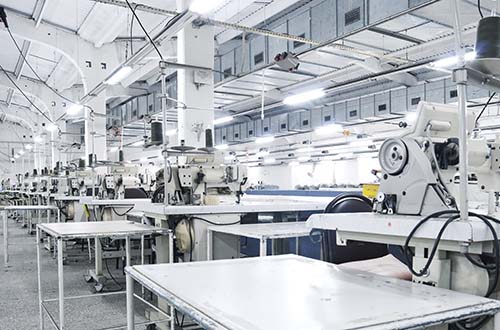ANH MINH
GARMENT INTERNATIONAL TRADING CO.,LTD
GARMENT INTERNATIONAL TRADING CO.,LTD
: 090.113.2414
In order to avoid a mass job loss scenario, the ASEAN textile and clothing industry should move from an "export-oriented" production model to a middle-class one in the region.
Over the next few decades, about 56% of wage workers in Cambodia, Indonesia, the Philippines, Thailand and Vietnam can be replaced by modern and automated technologies, such as 3D printers. .
It's not far off
That is the conclusion made by the International Labor Organization (ILO) in July last year after a series of studies. Following this warning, by the end of 2016, the Ministry of Labor, Invalids and Social Affairs (MOLISA) underlines that about 80% of low skilled workers in our country will lose their jobs to the hands of robots, of which two sectors face the risk. Largest garment and electronics.
Of course, mass job loss does not happen overnight, but the "robotics" trend is actually taking place. There are 9 million jobs in textile, garment and footwear industries throughout South East Asia. According to a report by the ILO, it is unlikely that 64 percent of Indonesian textile and garment workers will lose their jobs to automatic production lines - the so-called "sewbot". This figure is much higher in Vietnam and Cambodia, with 86% and 88% forecast respectively.
According to Quartz, most of the steps in the garment process have been automated, from button selection to fabric cutting. Some specialized machines can also sew the bag. There is not a commercial robot capable of chaining all the threads with all kinds of fabric, needles ... to make a complete shirt or pants but with the momentum of technology nowadays, nothing is impossible.
In Vietnam, the ILO report says a garment company will invest in automatic cutters by 2015, and then leave 15 workers for one machine. Within 18 months, the company proves that the cost is saved and does not require new workers because only one person has control of 3-4 machines.

Will the automatic production line be the future of the world's apparel industry?
Dangerous?
Although it creates many jobs, productivity in Vietnam's garment sector is much lower than that of other Southeast Asian countries - only 20% of Thailand and Cambodia's equivalent. The level of technology adoption is also behind.
Jae-hee Chang, co-author of the ILO report, says companies want to use automated technology to increase their price competitiveness and product quality. But this requires a large investment in technology and a strong training of workers. These two barriers are not easy to pass now to the sewbot "landing" factories in Asia, according to The Guardian (England).
In contrast, the installation of automated lines in Europe and America is not too difficult. Starting in 2017, the Adidas Company's "Speedfactory" factory in Germany will use robots to produce shoes. With 2 robot lines, Speedfactory only needs 160 employees. Adidas says Speedfactory only ships 500,000 pairs of shoes a year - more than its global total of 301 million pairs of shoes by 2015 - and most of its products are still produced from existing chains. Adidas did not hide the opening of a similar factory in the United States, calling it a "change of pace".
This puts pressure on ASEAN countries as well as shows that the role of robots in production is irreversible. According to Jae-hee Chang, the scenario of losing jobs could be avoided if ASEAN garment factories change, moving from an "export-oriented" production model to serving the middle class in the region. . "They can also reduce the risk of widespread unemployment by producing high-quality items that automated lines are difficult to implement," Chang said. At the macro level, relevant governments need a strategy to train workers to meet high-tech jobs, according to Quartz. If it continues to get cheap labor as a competitive advantage, the ILO believes that sooner or later it lags behind in the world economy.
Hotline